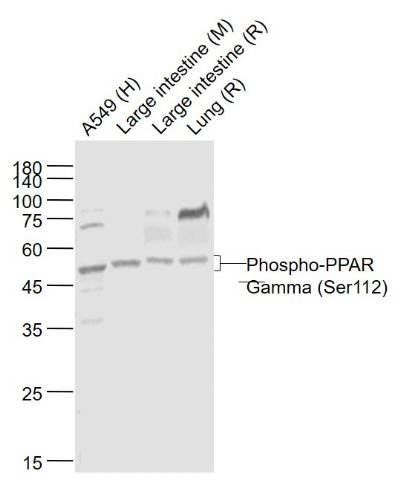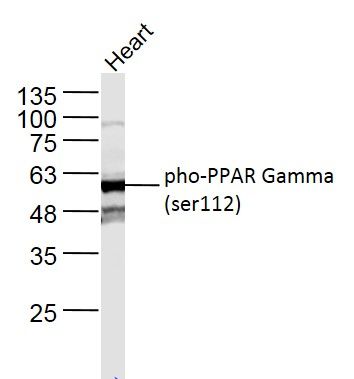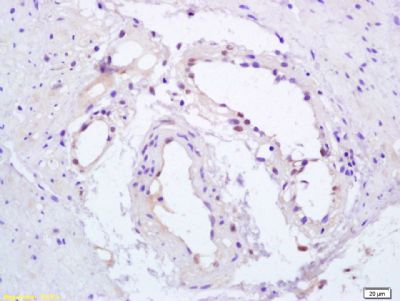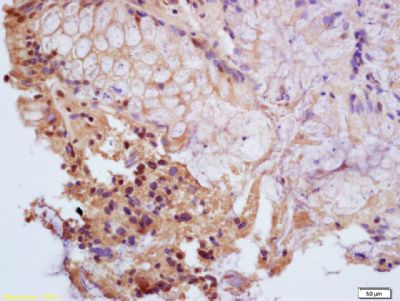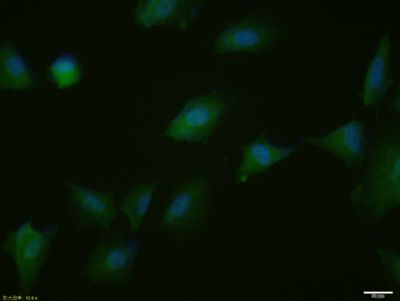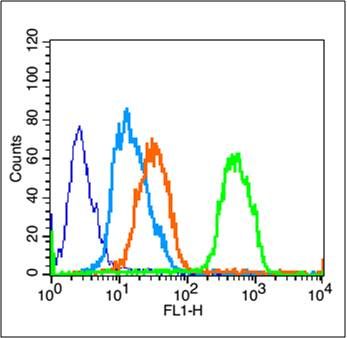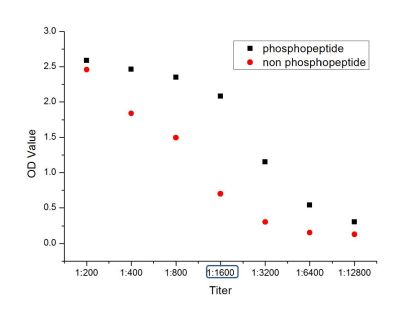Sample:
Lane 1: A549 (Human) Cell Lysate at 30 ug
Lane 2: Large intestine (Mouse) Lysate at 40 ug
Lane 3: Large intestine (Rat) Lysate at 40 ug
Lane 4: Lung (Rat) Lysate at 40 ug
Primary: Anti-Phospho-PPAR Gamma (Ser112) (SL3737R) at 1/1000 dilution
Secondary: IRDye800CW Goat Anti-Rabbit IgG at 1/20000 dilution
Predicted band size: 51 kD
Observed band size: 51 kD
Sample:
Heart (Mouse) Lysate at 30 ug
Primary: Anti-Phospho-PPAR Gamma (ser112) (SL3737R) at 1/300 dilution
Secondary: IRDye800CW Goat Anti-Rabbit IgG at 1/20000 dilution
Predicted band size: 57 kD
Observed band size: 57 kD
Tissue/cell: human gastric carcinoma; 4% Paraformaldehyde-fixed and paraffin-embedded;
Antigen retrieval: citrate buffer ( 0.01M, pH 6.0 ), Boiling bathing for 15min; Block endogenous peroxidase by 3% Hydrogen peroxide for 30min; Blocking buffer (normal goat serum,SLC0005) at 37鈩� for 20 min;
Incubation: Anti-Phospho-PPAR Gamma(ser112) Polyclonal Antibody, Unconjugated(SL3737R) 1:200, overnight at 4掳C, followed by conjugation to the secondary antibody(SP-0023) and DAB(SLC0010) staining
Tissue/cell: human colon carcinoma; 4% Paraformaldehyde-fixed and paraffin-embedded;
Antigen retrieval: citrate buffer ( 0.01M, pH 6.0 ), Boiling bathing for 15min; Block endogenous peroxidase by 3% Hydrogen peroxide for 30min; Blocking buffer (normal goat serum,SLC0005) at 37鈩� for 20 min;
Incubation: Anti-Phospho-PPAR Gamma(ser112) Polyclonal Antibody, Unconjugated(SL3737R) 1:200, overnight at 4掳C, followed by conjugation to the secondary antibody(SP-0023) and DAB(SLC0010) staining
A549 cell; 4% Paraformaldehyde-fixed; Triton X-100 at room temperature for 20 min; Blocking buffer (normal goat serum, SLC0005) at 37°C for 20 min; Antibody incubation with (Phospho-PPAR Gamma (Ser112)) polyclonal Antibody, Unconjugated (SL3737R) 1:100, 90 minutes at 37°C; followed by a conjugated Goat Anti-Rabbit IgG antibody at 37°C for 90 minutes, DAPI (blue, C02-04002) was used to stain the cell nuclei.
Blank control (blue line): U251 (fixed with 70% ethanol (Overnight at 4℃) and then permeabilized with 90% ice-cold methanol for 30 min on ice).
Primary Antibody (green line): Rabbit Anti-ho-PPAR Gamma (ser112) antibody (SL3737R), Dilution: 1μg /10^6 cells;
Isotype Control Antibody (orange line): Rabbit IgG .
Secondary Antibody (white blue line): Goat anti-rabbit IgG-FITC,Dilution: 1μg /test.
phosphopeptide
non phosphopeptide
|
